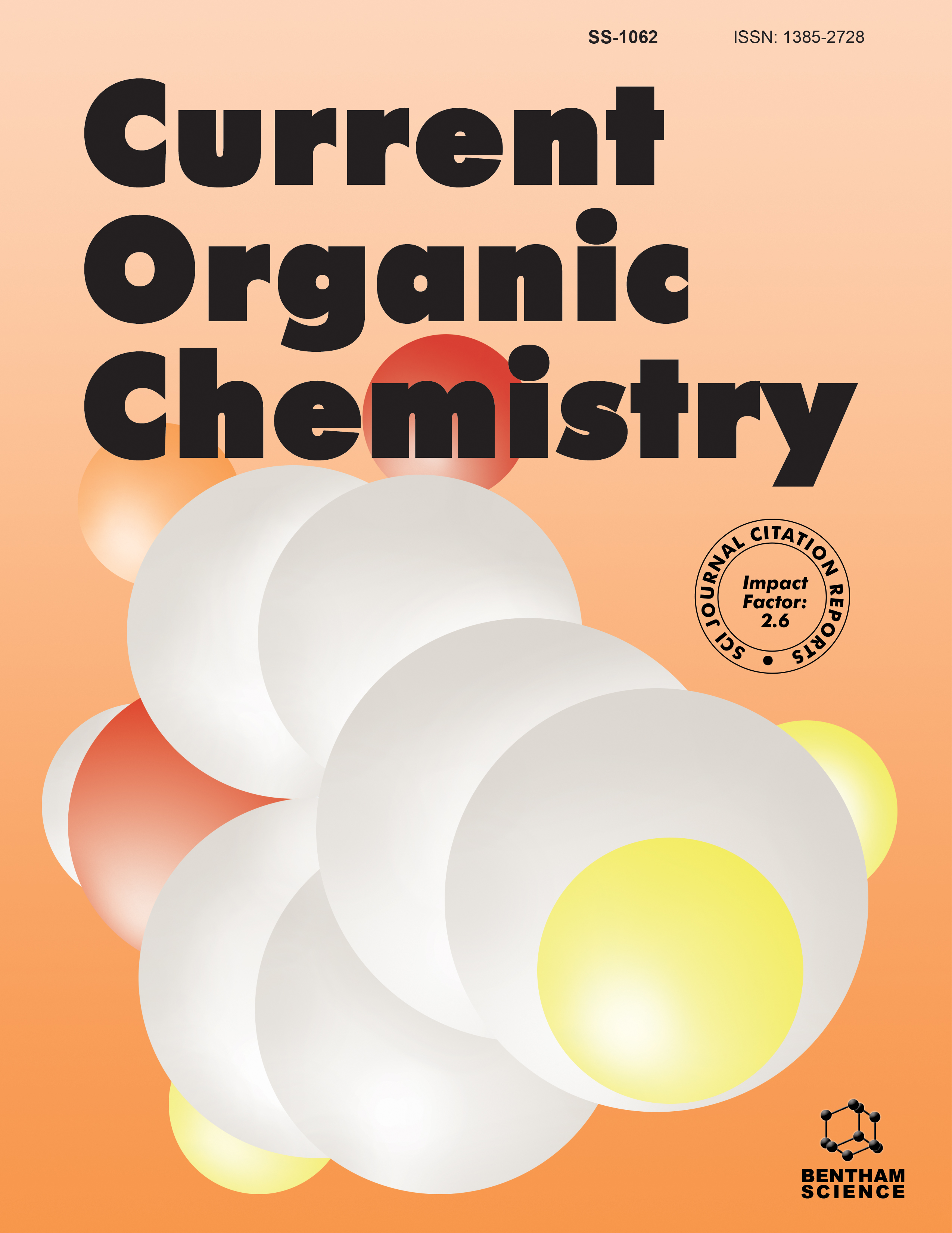- Home
- A-Z Publications
- Current Organic Chemistry
- Previous Issues
- Volume 25, Issue 24, 2021
Current Organic Chemistry - Volume 25, Issue 24, 2021
Volume 25, Issue 24, 2021
-
-
Bridged Benzocyclotrimers: Concepts, Synthesis, and Applications
More LessAuthors: Sergio Cossu and Paola PelusoBridged polycyclic frameworks represent a unique tool to form curved units; the bicyclo[2.2.1]hepta-2,5-diene system is widely exploited to design and induce concave topologies. In particular, bridged benzocyclotrimers (BCTs) are characterized by a flat aromatic base decorated with bridged polycyclic motifs, which provide the suitable curvature underlying the concave-convex topology. In the 1960s, these molecules attracted Read More
-
-
-
Recent Progress in the Synthesis of Isoxazoles
More LessAuthors: Dau X. Duc and Vo Cong DungIsoxazole derivatives are aromatic five-membered ring heterocyclic compounds with one oxygen atom and one nitrogen atom at adjacent positions. These compounds have a broad spectrum of applications in medicinal chemistry, such as antimicrobial, anticancer, antitumor, antitubercular, analgesic, anti-inflammatory, antidepressant, and anticonvulsant activities and some of them are well-known drugs for t Read More
-
-
-
Methods for Direct Conversion of Primary Nitroalkanes to Nitriles
More LessIn recent years, reductive dehydration of primary nitro compounds has been demonstrated as an attractive and alternative approach for the direct synthesis of nitriles. Although scattered information on the conversion of alkyl nitrites and/or nitroalkanes to the corresponding nitriles has been reported in the literature, a research paper describing comprehensive information at one place is scarce. The present review has attem Read More
-
-
-
Quinoxaline as Ubiquitous Structural Fragment: An Update on the Recent Development of its Green Synthetic Approaches
More LessQuinoxaline is a versatile heterocyclic moiety that possesses a wide range of biological activities. Therefore, many researchers have been performing the synthesis of quinoxaline derivatives on a daily basis. In addition, high demands for their synthesis often result in an increased generation of different waste chemicals. However, to minimize the utilization and generation of toxic organic substances, the present re Read More
-
-
-
Hydroxyethyl Isoflavonoids from the Leaves of Maclura tricuspidata
More LessAuthors: Yang H. Jo, Sang Won Yeon, Se Hwan Ryu, Solip Lee, Seon Beom Kim, Bang Yeon Hwang and Mi Kyeong LeeMaclura tricuspidata, which belongs to the Moraceae family, is widely distributed in Asia, including Korea. All parts of this plant, such as roots, fruits, and leaves, are rich in diverse bioactive compounds, especially xanthones and isoflavonoids. Investigation of the leaves of M. tricuspidata through various chromatographic techniques yielded fourteen compounds, including five new compounds. The new compounds were determine Read More
-
Volumes & issues
-
Volume 29 (2025)
-
Volume 28 (2024)
-
Volume 27 (2023)
-
Volume 26 (2022)
-
Volume 25 (2021)
-
Volume 24 (2020)
-
Volume 23 (2019)
-
Volume 22 (2018)
-
Volume 21 (2017)
-
Volume 20 (2016)
-
Volume 19 (2015)
-
Volume 18 (2014)
-
Volume 17 (2013)
-
Volume 16 (2012)
-
Volume 15 (2011)
-
Volume 14 (2010)
-
Volume 13 (2009)
-
Volume 12 (2008)
-
Volume 11 (2007)
-
Volume 10 (2006)
-
Volume 9 (2005)
-
Volume 8 (2004)
-
Volume 7 (2003)
-
Volume 6 (2002)
-
Volume 5 (2001)
-
Volume 4 (2000)
Most Read This Month
Article
content/journals/coc
Journal
10
5
false
en


